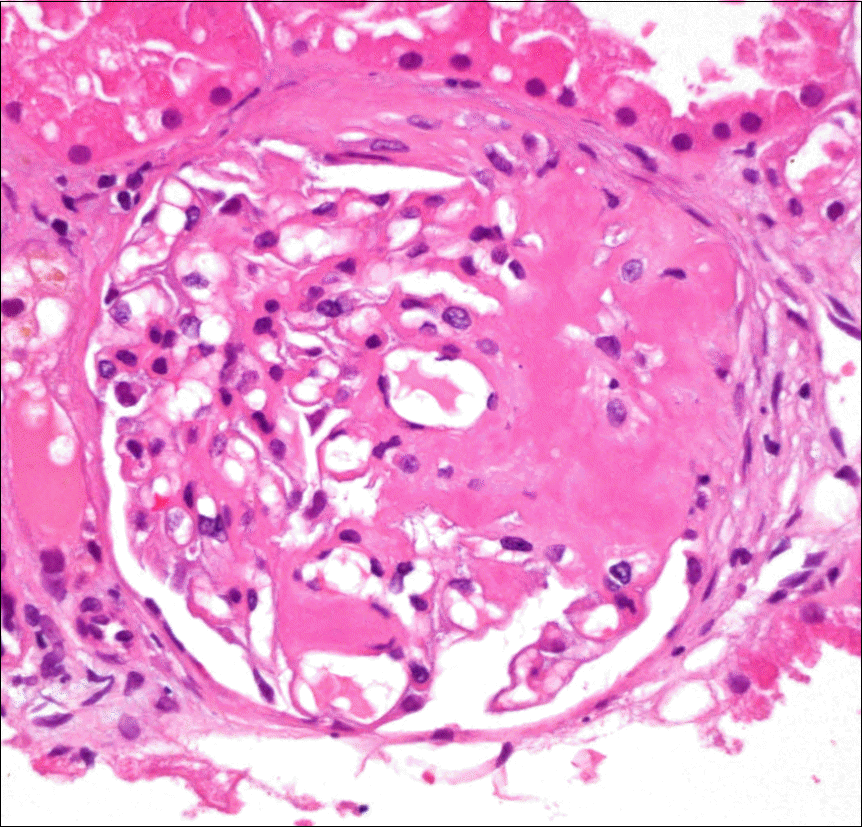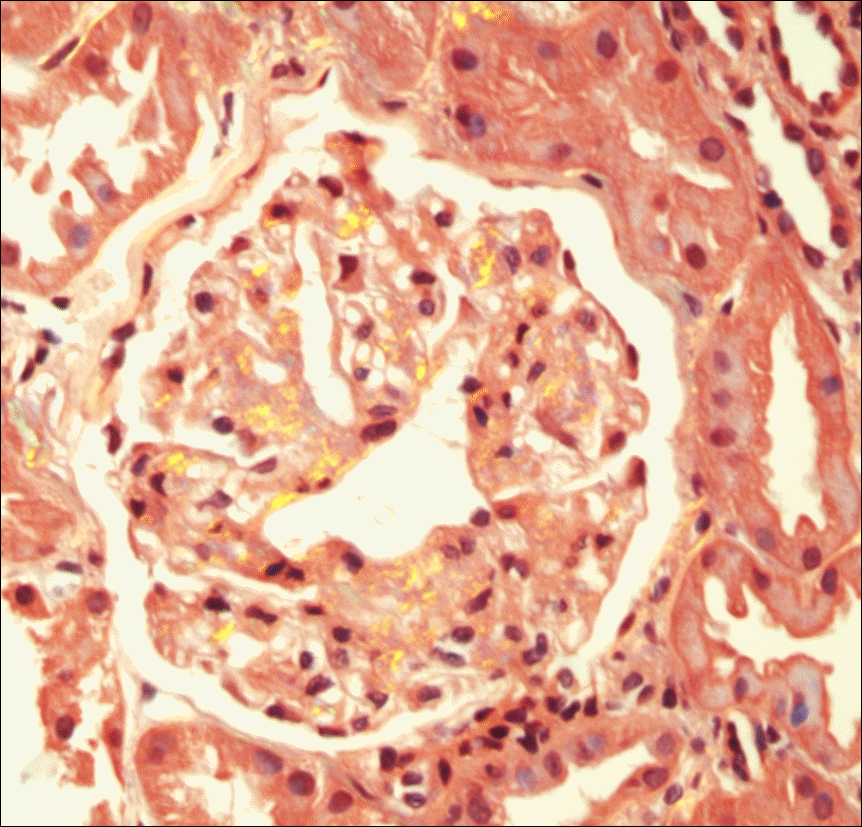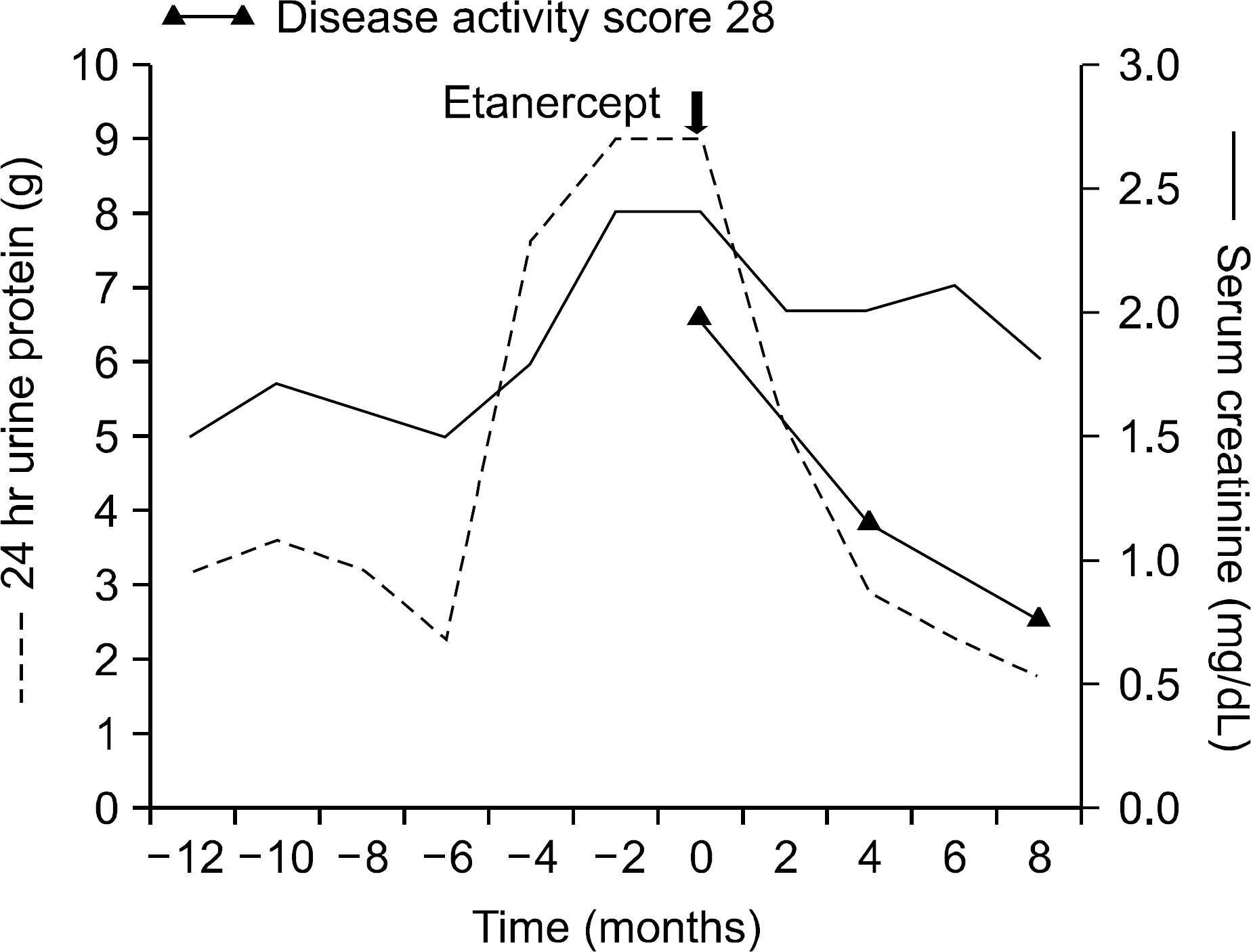Abstract
Secondary amyloidosis is a severe complication of refractory rheumatoid arthritis for which no effective treatment exists. Although the benefits of tumor necrosis factor alpha inhibitors in rheumatoid arthritis treatment are well known, their role in renal amyloidosis secondary to rheumatoid arthritis is unclear and their safety in patients with chronic kidney disease is not well reported. We present an unusual case of a 65-year-old female with moderate renal failure and severe proteinuria, who was diagnosed with secondary amyloidosis associated with refractory rheumatoid arthritis subsequent to treatment with corticosteroids, methotrexate, hydroxychlorquine, and leflunomide. She was treated with etanercept 25 mg, administered as a subcutaneous injection twice weekly for 8 months. The patient had no complications following the treatment. Treatment with etanercept led to a decrease in proteinuria and stabi-lization of renal function over time.
References
1. Lachmann HJ, Goodman HJ, Gilbertson JA, Gallimore JR, Sabin CA, Gillmore JD, et al. Natural history and outcome in systemic AA amyloidosis. N Engl J Med. 2007; 356:2361–71.

2. Gillmore JD, Hawkins PN. Drug Insight: emerging therapies for amyloidosis. Nat Clin Pract Nephrol. 2006; 2:263–70.

3. Fernández-Nebro A, Tomero E, Ortiz-Santamaría V, Castro MC, Olivé A, de Haro M, et al. Treatment of rheumatic inflammatory disease in 25 patients with secondary amyloidosis using tumor necrosis factor alpha antagonists. Am J Med. 2005; 118:552–6.

4. Dhillon S, Lyseng-Williamson KA, Scott LJ. Etanercept: a review of its use in the management of rheumatoid arthritis. Drugs. 2007; 67:1211–41.
5. Gertz MA, Kyle RA. Secondary systemic amyloidosis: response and survival in 64 patients. Medicine (Baltimore). 1991; 70:246–56.
6. Gillmore JD, Hawkins PN, Pepys MB. Amyloidosis: a review of recent diagnostic and therapeutic developments. Br J Haematol. 1997; 99:245–56.

7. Schiff MH, Whelton A. Renal toxicity associated with disease-modifying antirheumatic drugs used for the treatment of rheumatoid arthritis. Semin Arthritis Rheum. 2000; 30:196–208.

8. Don BR, Spin G, Nestorov I, Hutmacher M, Rose A, Kaysen GA. The pharmacokinetics of etanercept in patients with end-stage renal disease on haemodialysis. J Pharm Pharmacol. 2005; 57:1407–13.

9. Gottenberg JE, Merle-Vincent F, Bentaberry F, Allanore Y, Berenbaum F, Fautrel B, et al. antitumor necrosis factor alpha therapy in fifteen patients with AA amyloidosis secondary to inflammatory arthritides: a followup report of tolerability and efficacy. Arthritis Rheum. 2003; 48:2019–24.
10. Nakamura T, Higashi S, Tomoda K, Tsukano M, Shono M. Effectiveness of etanercept vs cyclophosphamide as treatment for patients with amyloid A amyloidosis secondary to rheumatoid arthritis. Rheumatology (Oxford). 2012; 51:2064–9.

11. Kim DH, Park KH, Lee SH, Hyun SY, Kie JH, Kang EW. A case of AA amyloidosis treated with infliximab. Korean J Nephrol. 2010; 29:638–43.




 PDF
PDF ePub
ePub Citation
Citation Print
Print





 XML Download
XML Download